Blushing Delight™ Fruit Snacks™ Apple Tree
Description
About the Blushing Delight™ Apple Tree
Light, sweet, crisp and juicy! Enjoy homegrown fruit with Blushing Delight™ Apple Tree, perfect for small gardens and edible landscaping. This compact Fruit Snacks™ columnar apple variety offers rapid growth and abundant yields within a few years post-planting.
Resilient to cold climates and boasting robust disease resistance, Blushing Delight™ serves as an ideal edible privacy hedge or eye-catching accent in larger containers. Planting two different apple tree varieties ensures optimal pollination, with most Fruit Snacks™ apples blooming mid-season, mutually aiding in this process.
Beyond their delectable taste, Blushing Delight™ contributes to landscape beauty, attracting bees with its stunning spring flowers. These flowers transform into delectable fruits in fall, offering both aesthetic and culinary pleasures. Their versatility in small spaces makes them excellent for hedges or container planting, catering to urban edible landscapers for easy harvest and visual appeal.
Welcome spring with delicate white blossoms, leading to the arrival of blushing red apples in autumn. These apples tantalize the taste buds with their delightful blend of sweetness, lightness, and flavor, perfect for snacking, baking, and more.
Growing the Blushing Delight™ Fruit Snacks™ Apple Tree
The Fruit Snacks™ line, including Blushing Delight™, is the result of meticulous breeding by top European apple breeders. This breeding effort ensures robust rust resistance and virus-free trees, eliminating the need for harsh chemicals in cultivation. Enjoy the fruit’s bountiful harvest without the worry of disease susceptibility, thanks to its inherent disease resilience.
Designed for ease, these trees require minimal care due to their upright, dwarf, and slender nature. Ensure successful pollination by planting two different apple tree varieties. Their adaptability to small spaces makes them perfect for pots or as charming hedges. Cultivating Blushing Delight™ promises not only a visual delight but also a bounty of delicious, chemical-free fruits for all to relish.
May be covered by USPP #28,439 or other patents.
Characteristics
| Bloom Color | Pink, White |
| Bloom Time | Early - Mid |
| Chill Hours | 800 - 1200 |
| Fruit Color | Yellow |
| Fruit Size | Medium |
| Hardiness Zone Range | 5A - 8 |
| Pollination | Pollinator Required |
| Ripens/Harvest | September |
| Shade/Sun | Full Sun |
| Soil Composition | Loamy |
| Soil Moisture | Well Drained |
| Soil pH Level | 5.5 - 7.5 |
| Taste | Sweet |
| Texture | Firm |
| Years to Bear | 1 - 2 |
Zone Compatibility
Pollination
Tools & Supplies
Planting & Care
Learn all about how to grow apple trees in The Growing Guide. An entire section of our website dedicated to your growing success.
Questions & Answers
Yes these should work for pollination as ther eis an overlapping mid season bloom time.
I've had my 2 columnar apples in half-whisky barrels for 2 years and have had no issue with them staying out all winter in West Texas (down to 10 degrees many nights). I have a cover crop of white dutch clover in there as nitrogen nutrient booster and give a little goat manure compost each spring. They both seem pretty happy, I've got about 6-8 apples growing on each of them this year at around 6ft tall. :-)
Cross-pollination by a different variety is key to its growing and bearing success
A mature columnar apple tree typically produces 10 to 20 pounds of apples per year under ideal growing conditions.
Yes as they both have an Early to Mid season bloom time.
No, a Gala apple tree and a Blushing Delight Columnar apple tree are not ideal pollination partners.
Why?
Gala is a mid-season bloomer, while Blushing Delight's bloom time is not well-documented but tends to be early to mid-season. There may not be enough overlap for reliable cross-pollination.
Columnar apple trees sometimes have reduced flower production compared to standard varieties, which can affect pollination success.
We recommend treating as soon as you see this.
Control: Spray
Monterey Fruit Tree Spray Plus
Control: Natural Spray
Monterey Fruit Tree Spray Plus
Ferti-lome® Triple Action
Natural Guard® Neem
Control: Manual
Both hosts need to be present for the disease cycle to persist. Remove neighboring cedar trees and junipers if possible/feasible.
Plant rust-resistant apple varieties in areas prone to cedar apple rust. Spraying helps control rust symptoms, but will not completely control the disease.
As with all fruit trees the columnar apples need full sun. The pot size should be about 20 inches wide and 20 inches deep
They will not bear fruit in the first year as these are young trees.
The branches of non-bearing young apple trees will normally grow 12 to 18 inches per year while the branches of bearing apple trees will grow 8 to 12 inches in a season.

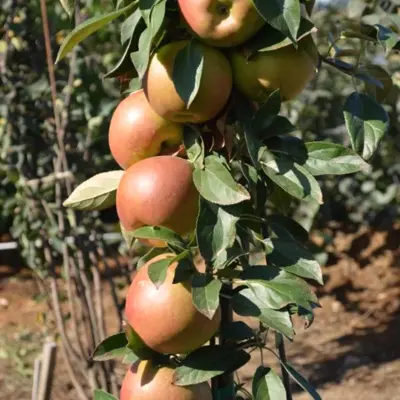
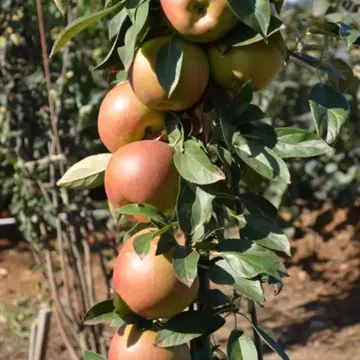
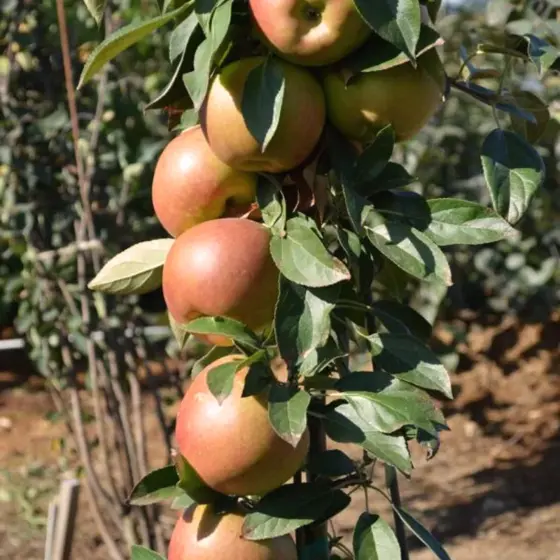
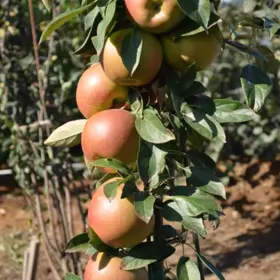
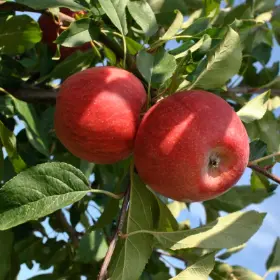
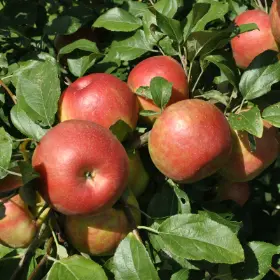
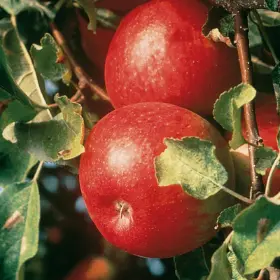
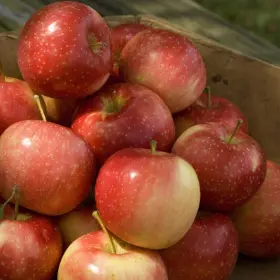
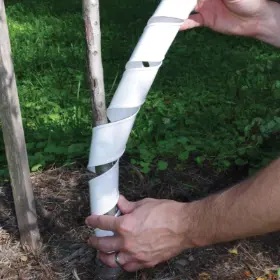
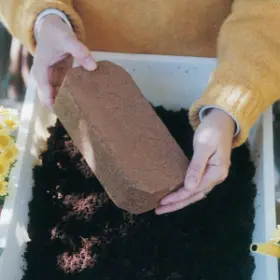
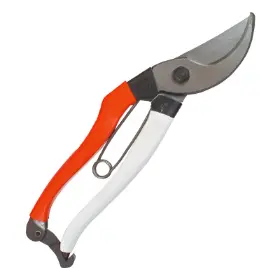
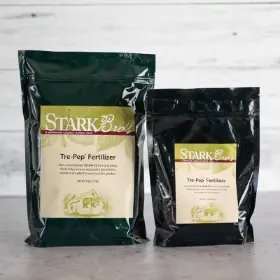
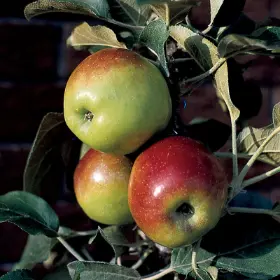
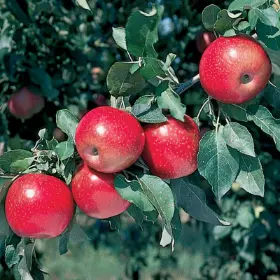
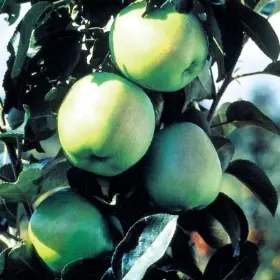

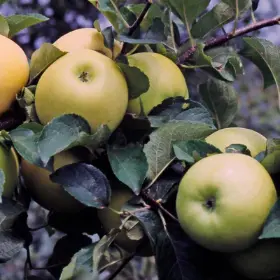
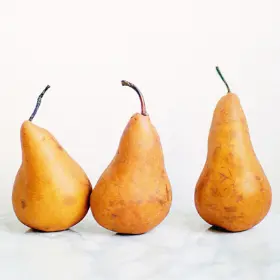
Interested in trying columnar trees
As per your company’s recommendation.
Already have two columns type of trees wanted to add another variety
Because of small space